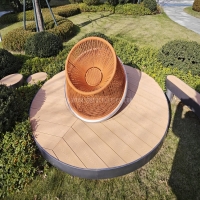Welcome to the website for landscape facilities products and knowledge.
What are the most effective ways to position the Landscape Round table in a room for optimal flow?
Positioning a landscape round table effectively requires careful consideration of both aesthetics and functionality. The circular nature of these tables creates unique opportunities for optimizing room flow while maintaining visual harmony. Understanding the fundamental principles of furniture placement can transform how space functions and feels.
Begin by assessing the room's primary traffic patterns. The most effective placement typically positions the round table away from major walkways while still serving as a central focal point. For dining areas, ensure at least 36 inches of clearance between the table edge and walls or other furniture to allow comfortable chair movement and easy passage. In living spaces, position the table where it won't interrupt natural movement corridors but still remains accessible from seating areas.
Consider the relationship between your round table and room architecture. Placing the table centered under a striking light fixture or beneath a decorative ceiling medallion creates visual hierarchy. In open-concept spaces, use the round table to define specific zones without creating visual barriers. The curved edges naturally soften sightlines and encourage conversational flow.
For rooms with multiple functions, strategic placement becomes even more crucial. Position the landscape round table where it can serve as a versatile surface - near seating arrangements for convenience, but not so close that it obstructs movement. In entryways, a centered round table creates an inviting focal point while maintaining clear pathways to other areas.
Lighting plays a significant role in table placement effectiveness. Ensure the table receives adequate ambient light without creating glare or shadows that might disrupt the space's functionality. Natural light from windows should complement rather than overwhelm the table's position.
The scale of your round table relative to the room dimensions determines optimal placement. Larger tables work best as true centerpieces, while smaller tables might function better as accent pieces placed slightly off-center. Always maintain balance with other furniture elements, creating a cohesive layout that supports both movement and function throughout the space.
Ultimately, successful round table placement combines practical traffic flow considerations with aesthetic principles. The goal is to create a space that feels both intentionally designed and naturally functional, where the round table enhances rather than hinders daily movement and activities.
Related search:

Recommendation
Swivel chair-Specialty steel structure woven rattan leisure chair with rotatable design